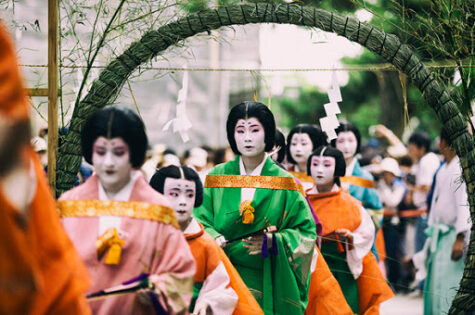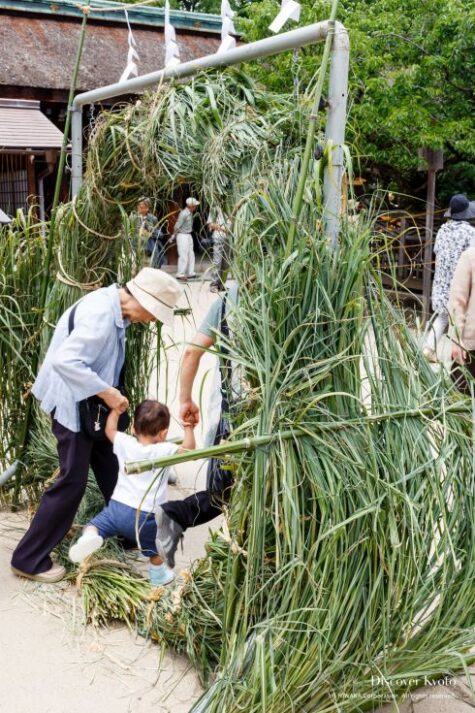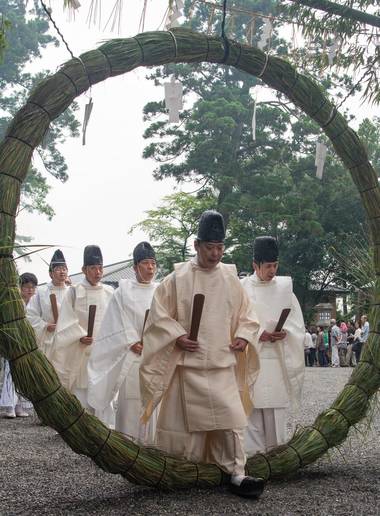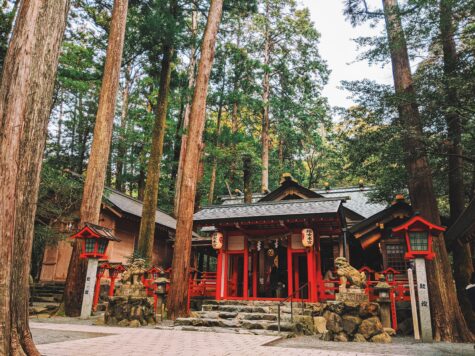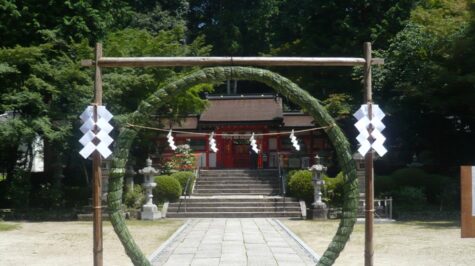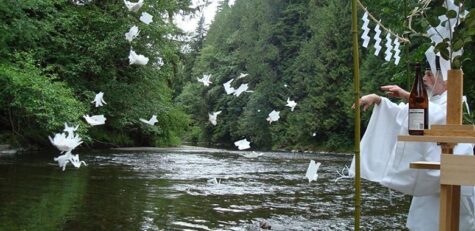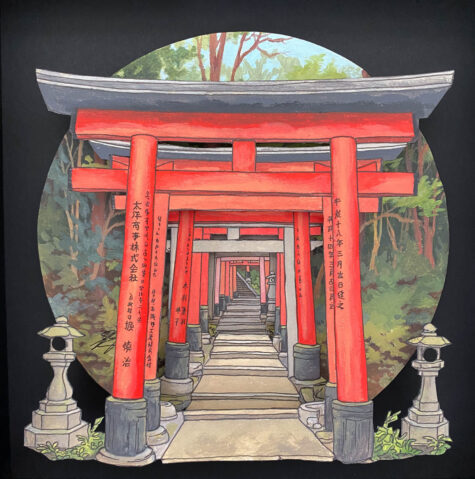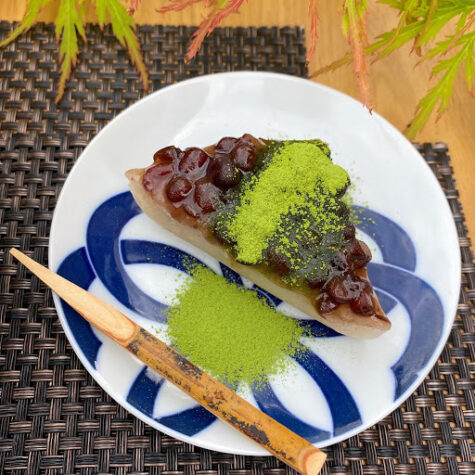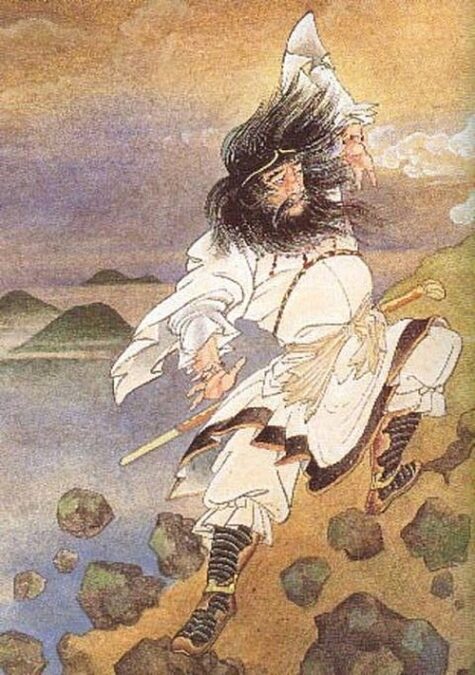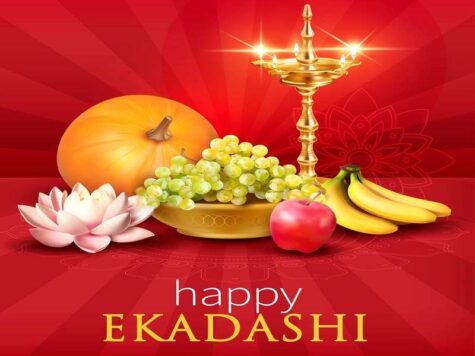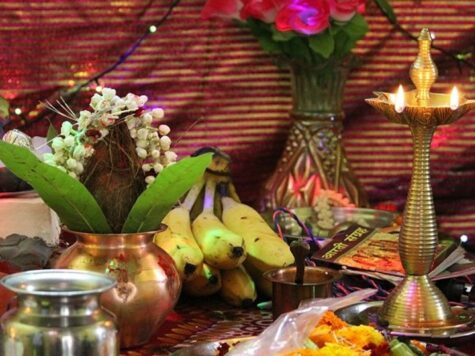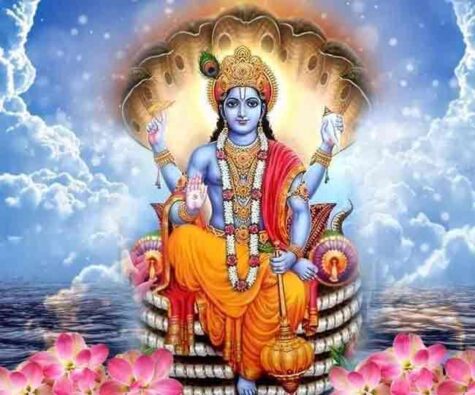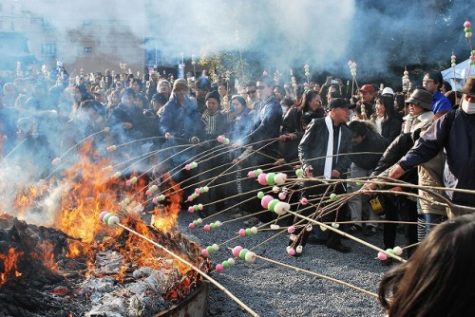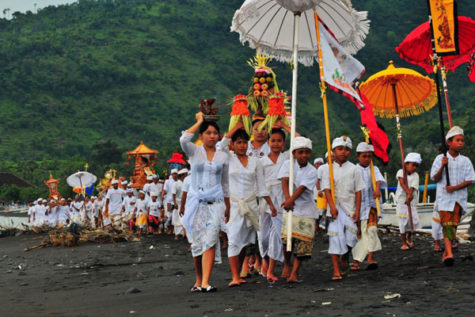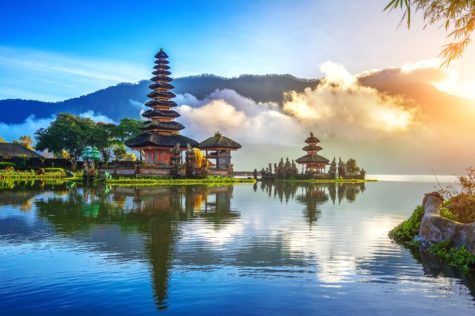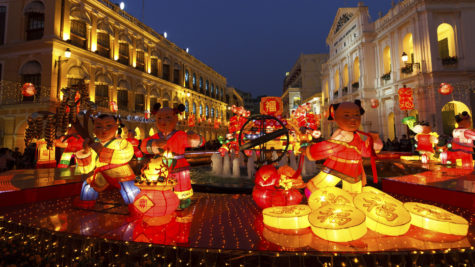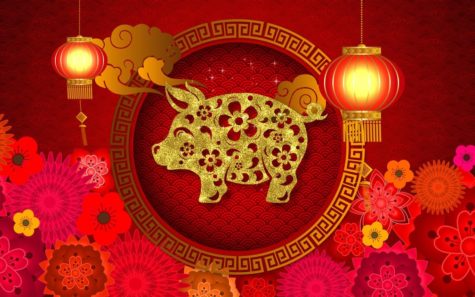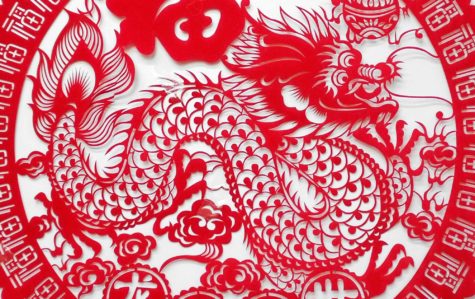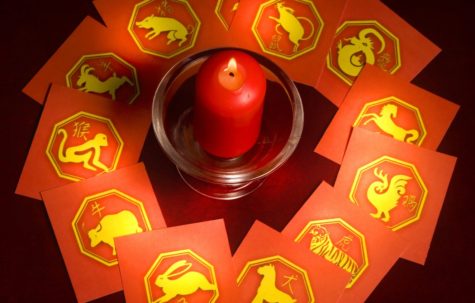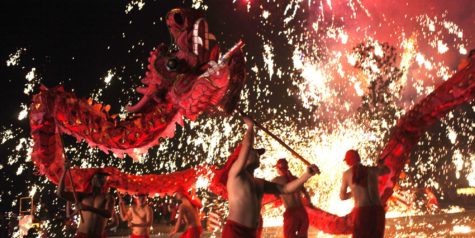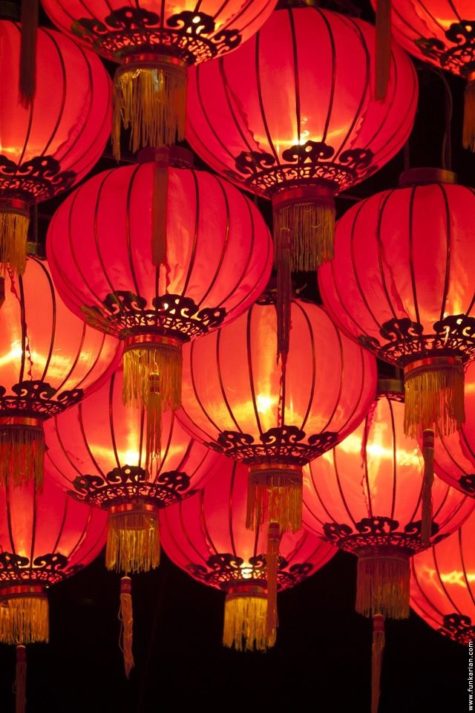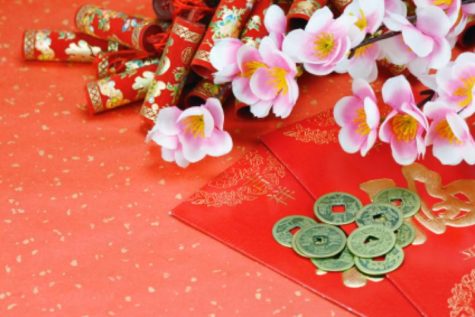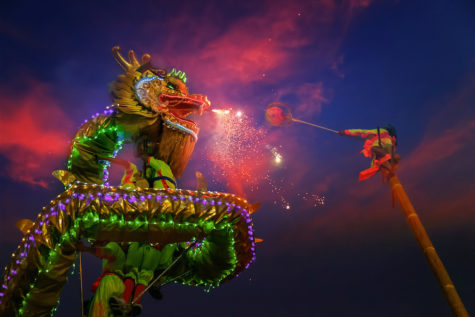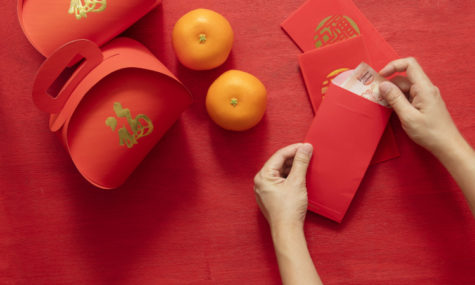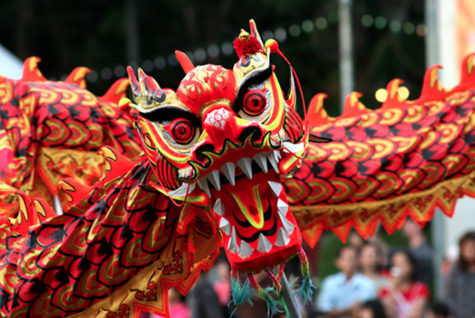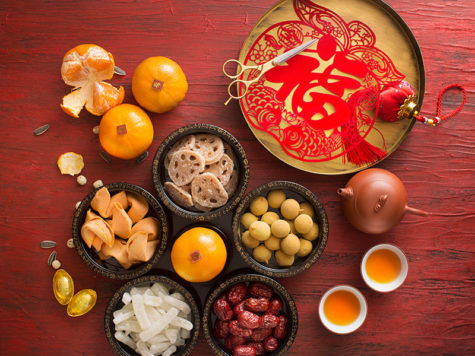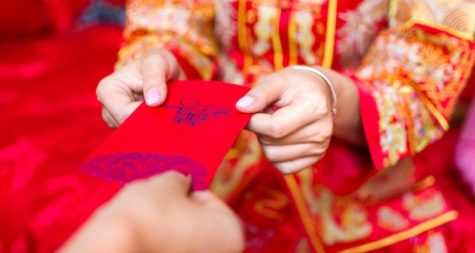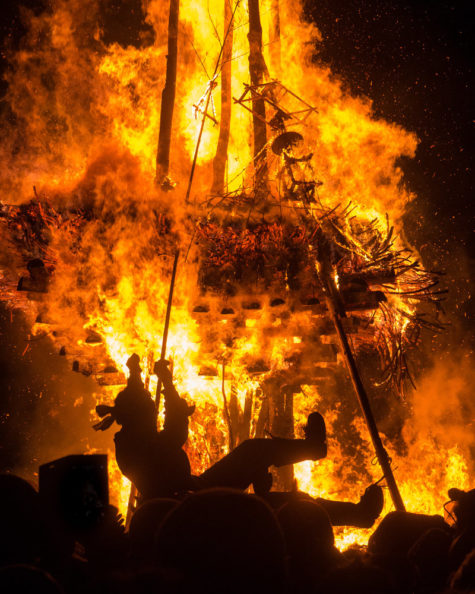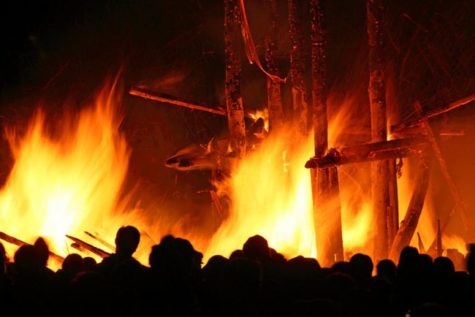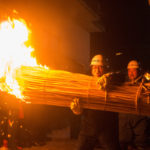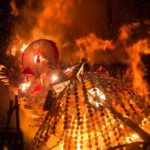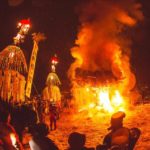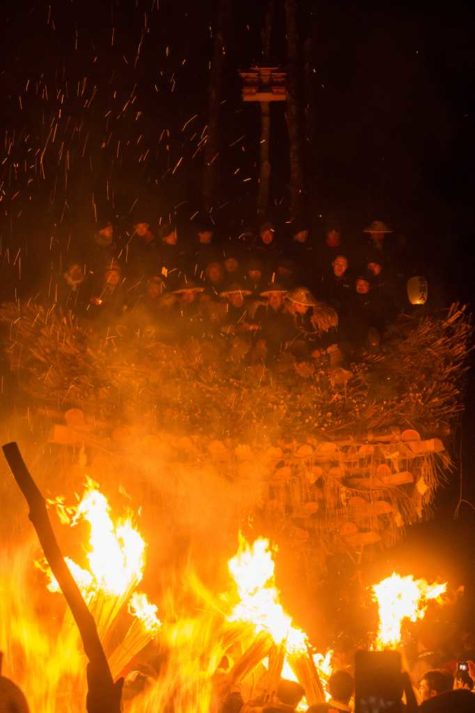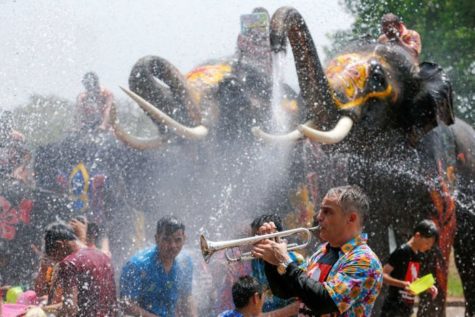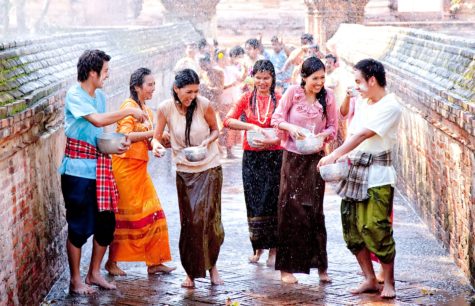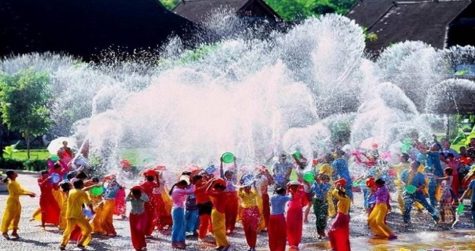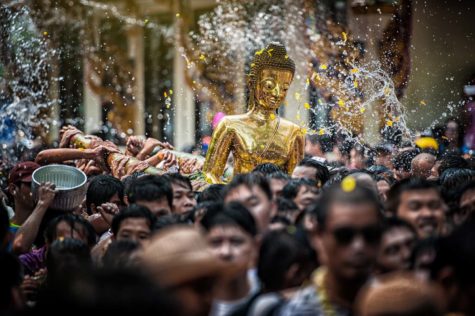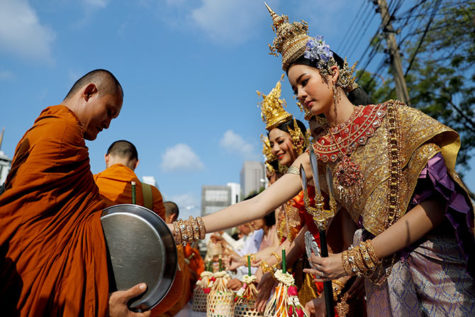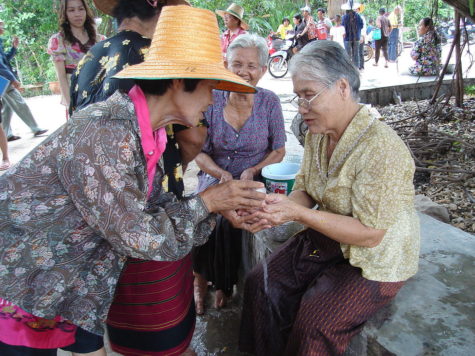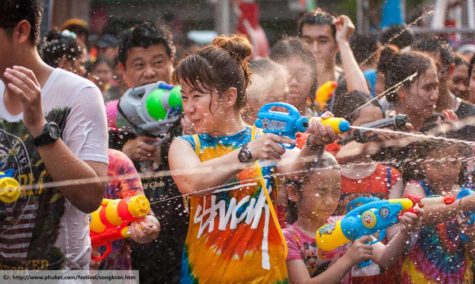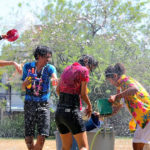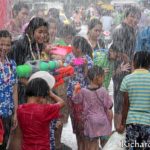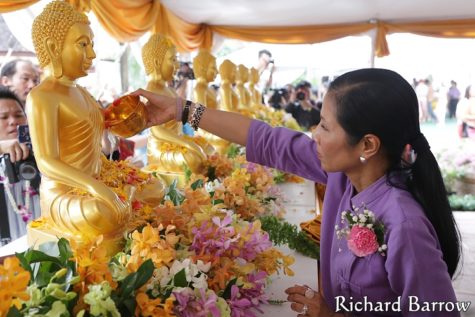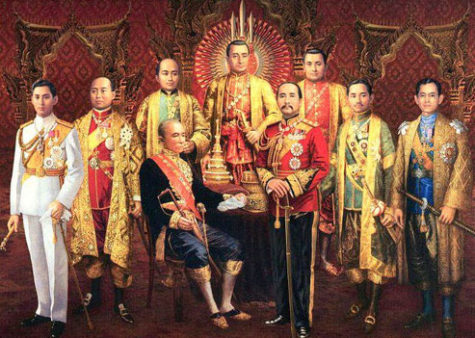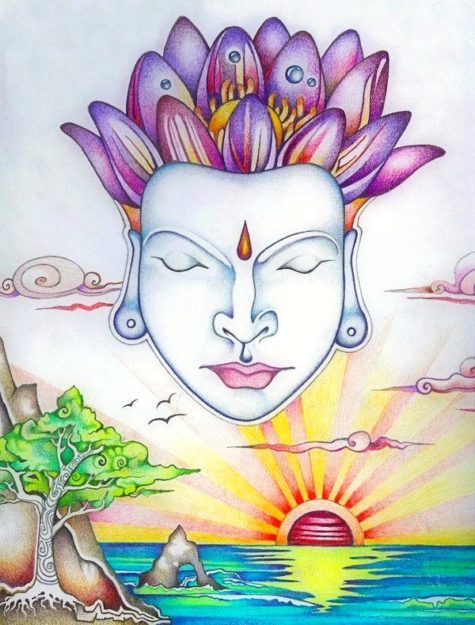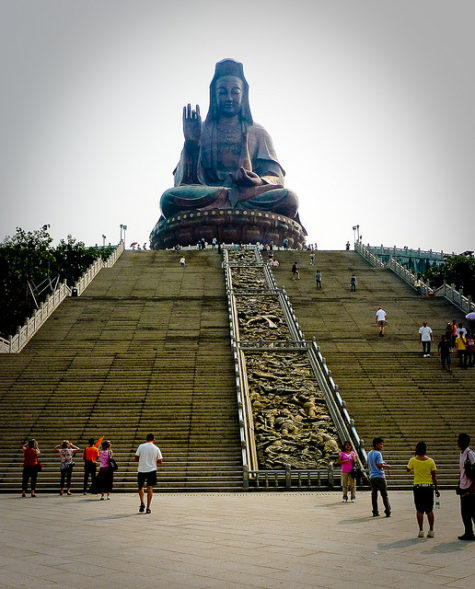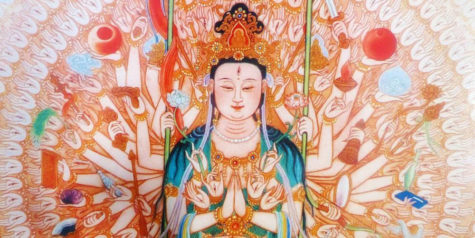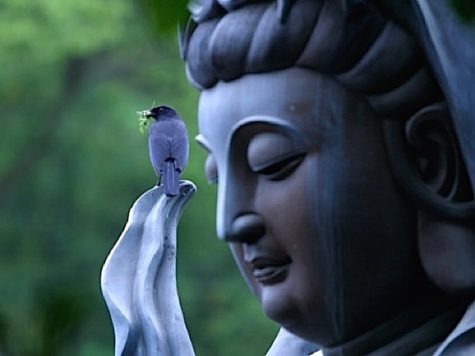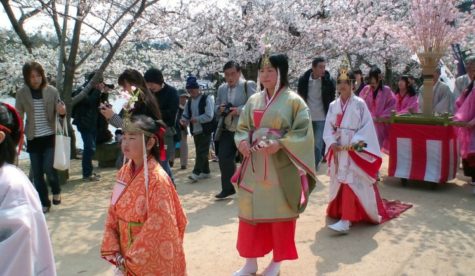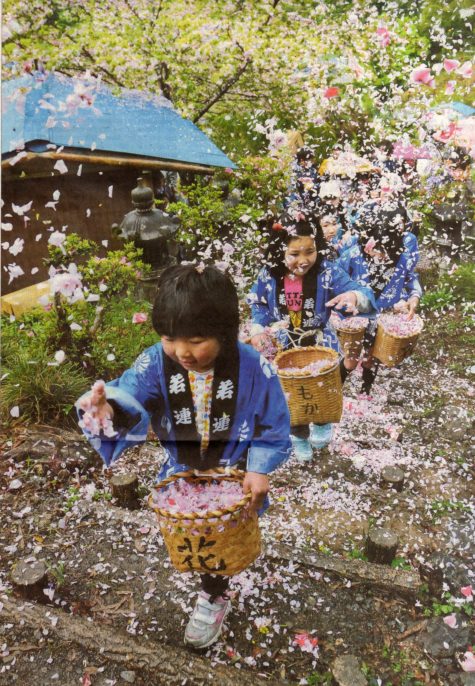Asian Celebrations
Nagoshi no Harae, literally “summer passing purification ceremony” is one of Japan’s most celebrated great rituals and is steeped in tradition. The purification ritual has been performed at shrines since ancient times, in the hope of atoning for misdeeds that have been committed in the first half of the year and to pray for the latter half yet to come. It is a chance for redemption and a new start for the remainder of the year.
Traditionally performed on the last day of the sixth month, the custom is still enjoyed today in modern Japan, every June 30, at many shrines across the country. Because the Nagoshi-no-Oharai falls between rice sowing and harvest, this ritual is a time of relaxation and community celebration.
In order to participate you can join in on June 30th when the priests of Shinto shrines all across Japan lead large crowds in the practice, or you can try it by yourself.
Create a ring of Miscanthus reeds, (also called Chinese Reed, Ramie, or Elephant Grass). Simply bow, pass through the wreath and circle back to the front from the left, pass through again to the right, then pass through one last time. Just remember left, right, left like the sign for infinity ∞. As you pass through the ring, reflect on your year.
The key to all rituals performed in Shinto is the harmony between heaven and earth. The rituals create the space and process whereby you can return to the fullness of the inborn Kami — the divine in each person.
In Shinto, the Kami is the object of reverence. A word that cannot be translated
adequately into English, its most common translation is “God.” However, Stuart D. B. Picken writes in his “Historical Dictionary of Shinto” that “Divinity, the divine, or the mysterious are better candidates because they are less specific in the imagery they generate.”
Where to participate in Kyoto
Several of Kyoto’s most famous and popular shrines host the event including:
- Kitano Tenmangu Shrine, home to the largest chinowa in Kyoto (approximately five meters in height), which is set up at the shrine gate.
- Kamigamo Shrine also performs the ritual as well as handing out paper dolls to the participants, which are floated down the river to rid you of misfortune.
- Yoshida Shrine is another popular host of the event, where participants who offer a doll amulet to the deity are gifted a wreath in return.
The Ritual at the Tsubaki Grand Shrine
Tsubaki Grand Shrine was established over 2,000 years ago and has been the site of the same daily Shinto purification rituals ever since, including the Nagoshi-no-Oharai.
During the Nagoshi-no-Oharai, the Torii pathway leading to the Tsubaki Grand Shrine is transformed with hundreds of people attending this ritual. The Torii gateways are a distinctive symbol of Shinto and represent a gateway between heaven and earth. Although stylized over the centuries, the original gateway was most likely a simple rope hung between the trees or posts to mark an area considered sacred.
At the Tsubaki Grand Shrine, there are a succession of Torii leading up to the Honden, (the main worship hall), where the rituals are conducted. This Honden holds about 75 people and is built in the classical style of plain, unpainted Japanese cypress, with a stylized roof distinguished by ridge posts.
Along the sides of the gravel Torii pathway hang ropes tied with white paper streamers, called gohei, signifying the boundary of sacred space. The gohei are made in different sizes by the Shinto priests and are also considered sacred.
A large sacred ring, called chi-no-wa, made of loosely twisted Miscanthus reeds, is constructed in front of the Honden. There are numerous purification rituals as people wait for the start of the Nagoshi-no-Oharai.
The Nagoshi-no-Oharai ritual begins in the main worship hall with the traditional Oharai prayers and purification.
During the purification ritual, the Shinto priests cascade kirinusa (small cut pieces of sacred rope and cloth) onto all the worshippers in the Honden. Some priests then run out of the Honden and through the crowd lining the pathway, tossing kirinusa on them.
When they complete their daily Oharahi-no-Kotba, the worshippers line the Torii pathway in anticipation of the afternoon ritual service. Following the Ohara-no-Kotobai, the chief priest (Guji) leads all the other priests, who carry crates of paper dolls, three times through the chi-no-wa in a figure eight pattern.
Worshippers follow behind a reed boat (kaya-fune) carried by a senior priest. They know their routine in the ritual, a yearly tradition that passes from generation to generation, and wait patiently in silence for their opportunity to walk through the circle of reeds. This gentle, respectful procession reflects the learned knowledge of all participants.
Passing though the chi-no-wa, although complex, is executed smoothly and is amazing to watch. The paper dolls in the crates come from all those who have visited the Tsubaki Grand Shrine in the previous six months with special prayers, impurities, pollution, uncleanness, concerns or indulgences called tsumi. Each paper doll includes the name of the person, his or her birthday and a personal stamp.
(The Japanese use stamps in their daily lives to identify paperwork and bills. When you receive or pay for something, you get the stamp of the person who processed it, confirming that you have seen the document.)
These paper dolls are symbolic of a person’s tsumi and have been purified at the Tusbaki Grand Shrine before they’re carried by the Shinto priest through the circle of reeds and then to the riverbank.
After completing the walk through the circle of reeds, the priests go to a location on the river close to the shrine. Over the days leading up to the ritual, the priests have created a sacred space along the riverbank by hanging rope with gohei across the river. Along the far shoreline, a priest also places a large pole with hanging gohei.
In all Shinto purification rituals, sake and salt are used. The Guji (chief priest) sprays these into the sacred river water while reciting prayers. The Guji also make an offering to the Kami by presenting a Japanese evergreen – sakaki –the same offering presented at all Shinto shrines.
After the river purification is completed, the priests fling the paper dolls into the air like hundreds of white petals and let them float to the sea, signifying the release of impurities.
A Shinto Prayer for Purification
The kami shall lend ear to the sacred words.
No offences shall remain unpurged.
They shall be scattered and blown afar
by Heaven’s winds
descending through the eight-fold clouds.
Morning mists shall be cleared
by the morning winds,
Just as the mists of evening shall be swept away
by evening winds.
As a large ship anchored in a harbor
casts off the morrings from its bow
and is released into the great expanse of ocean,
So shall we be released of our impurities
As the trees of the thick grove rooted yonder
are cleared away with a sharp sickle~
So shall our offences be purged and swept away.
We pray that these impurities be swept away and that
The kami grant us purification to restore
the natural order.
Let the impurities be swept away by the kami Seoritsu Hime
Who dwells in the swift rivers that cascade
from the top of the high mountains
and from the top of the low mountains,
Carrying the impurities out to the great expanse of ocean;
There, where the river meets the great sea,
Hayakitsu Hime, who dwells
within the whirling myriad tides,
Shall open wide and swallow the impurities;
Let the door open, then, from the bottom country,
And the kami called Ibukido Nushi shall cause
great winds to expel the impurities
to the root country.
There, the kami called Haya Sasura Hime,
the quiet wanderer of the root country,
will sieze and dissolve the impurities,
Ridding us of imperfection and
returning us to our pristine natural state.
Grant us purification, grant us clarity.
We pray to the Heavenly Kami
and to the Earthly Kami ~
To all the myriad of kami
we recite this norito with awe and reverence.
Please hear these humble words.
Minazuki
The seasonal sweet minazuki, a type of steamed cake topped with azuki beans, is often sold during the ritual period. It is traditionally eaten on June 30th to ward of evil, ill health and bad luck for the second part of the year. The colour of minazuki is said to resemble ice to cool you from the summer heat. Here’s a recipe from Tokyo Pony.
You will need:
- A square container around 4×4 inches
- Something to steam the wagashi in (I used a bamboo steamer)
- 15g of kuzu root ( if it is not in a powder and more in chunks crush into a powder)
- 15g of glutinous rice flour ( the kind for making dango )
- 30g of sifted plain white flour
- 30g of unrefined caster sugar
- 100ml of water
- x1 can of sweet red beans
Combine the kuzu powder and dango flour then add a little of the water to make a paste, then add the rest and mix together. Then add in your flour and sugar and mix to combine.
Fill your container with water and tip it out ( this will just stop your wagashi from sticking ) then fill your container with your mixture, keeping a few tablespoons for later.
Place your container in a steamer and steamer over simmering water for about 20 minutes.
After this time take out your container from the steamer and add around 3/4 of the can of your sweet red beans to the top, spreading them out. Add the few spoonfuls of the remaining mixture you saved over the beans and pop back in the steamer for a further 10 minutes.
Remove and allow to cool in the fridge. Cut the wagashi while it in still in the container. If you cut it in an X from corner to corner, you will have 4 triangles. Carefully ease out the first piece, once you have one out the others are easily removed. I wouldn’t recommend tipping it upside down as you may spoil the look of your minazuki.
There you have it. They are nice enjoyed with a matcha tea you could even dust the top with matcha or kinako if you like.
The History of Nagoshi no Harae
Nagoshi no Harae was first established during the Nara Period (710-794) and was traditionally performed on the last day of the sixth and twelfth months of the lunar calendar at the Imperial court and Shinto shrines. The great purification at the Imperial court briefly came to an end due to the Onin War (1467-77), but continued to flourish at shrines. At some point, the twelfth month purification (harae) was abandoned and the sixth month purification (nagoshi no harae) became grander in scale.
The origin of the ritual comes from an ancient Japanese legend about the wandering god Susano’o no Mikoto. A poor man, Somin Shorai, showed the disguised god every luxury he could afford when asked for a place to stay the night. In return for housing the god for the night, he was given a chinowa wreath woven from reeds and instructed to wear it for protection.
In a turn of good luck, Somin and his descendants managed to escape plague and illness that befell the land. This story led to the practice of passing through the large Nagoshi no Harae chinowa wreath to ward off disaster and misfortune.
Sources:
- Culture Trip
- Tsubaki Shrine
- Starr King School
- Discover Kyoto
- Shinto Norito
Ekādaśī Tithi, the eleventh lunar day (Tithi) between the New Moon and Full Moon is an important day in Hinduism and Vaishnavism tradition. Ekadashi, also spelled as Ekadasi, is a day of self purification, redemption and spiritual progress. It is also known as Hari Vasara because it is dedicated to Lord Vishnu, is a day of fasting and prayers for all Hindus.
Our current Calendar has the dates of these days listed for every month. It can be found here.
Those who fast on this day are considered to get rid of malefic planetary influences, experience happiness, and gain the right peace of mind to think of Ishvara and attain moksha. It is a day of Vishtikarana, a day of malefic influences. Vishtikarana coincides with the second half of Ekādaśī Tithi and is avoided for all functions associated with worldly prosperity.
Ekadasi occurs twice in a Lunar month, in the bright fortnight and the dark fortnight. It is recommended to do a strict fast which means not to eat and drink at all because food is filled with our sins and bad karma. On this day, taking food increases our bad fortune. but if we fast this day we “burn” bad karma and and increase good fortune.
Fasting gives the body a chance to give rest to the digest system, instead of regular heavy meals three times a day, more fruits and light food is consumed, by doing so person goes for more of a spiritual life. It also teaches better control over body and mind. One of the biggest gains is staying healthy.
It is also important to give the physiological system some rest once a while. It may be overworked due to overeating or indiscrimination in diet. These irregularities get rectified in one day. Thus the observance of Ekadasi has many advantages — physical, astral, spiritual — and because this day has connection with the relation of the mind and body together with the moon, it helps improve meditation and contemplation.
The reason is because the planet itself is in a certain state on that day, so if we keep our body light and available, our awareness will turn inward. The possibility of opening the door within is more on that day. If you have a full stomach, and you are unaware and dull, you will not notice it. So to stay alert and also to purify the body, you go without food on that day – you ate dinner the previous day and the next thing you eat is dinner on Ekadashi.
Hinduism puts forth the idea that spiritual ascesis during Ekadashi helps a person to “jump out” of life and death cycle. Ayurveda recommends fasting to improve one’s health. Follow your personal features:
- If you have “dosha kapha” – keep dry fasting.
- If you have “Vata” then drink lemon water.
- If you have “Pita” drink milk or juice (use 40% of milk and 60% of water, pour some sugar)
Depending on your state of health, work load, and other factors you can choose your personal diet taking into account the recommended food for the day.
If you are unable to go without food – because your activity levels are such and you do not have the sadhana to support you – you can go on phalahara or fruit diet, which is light on the stomach so that your inner doors will open. Forceful denial of food is not the point. The point is to make everything into a conscious process. We do not want to compulsively eat like this, we choose.
How to abide by Ekadashi
In the Ekadashi morning you should take a shower, calm down and clear your mind and body. It is important to understand that fasting is not just rejection of food or any other stuff. If you give vent to anger or moral deficiency – you are not actually keeping a fast, you are just not eating. Avoid daytime sleep, oil massage and shaving.
If you are not fasting eat no more than one time per day (after midday) during Ekadashi.
If you happen to miss the Ekadashi – you can do the fast it the next day (Dvadashi) and stop fasting on the 3rd day (Triodashi). If the Ekadashi coincides with dashas (the 10th lunar days) there’s no need to fast, buf if it coincides with the Dvadasha (12th Lunar day) it calls “pure Ekadashi” (Mahadvadashi) and it can be kept strictly.
Stop fasting the next morning 2-3 hours after the sunrise. The first meal should consist of fresh fruits or juices. Be careful with your ration. Your stomach is not working during fasting so do not overload it with heavy food when your fast is over.
It is recommended to prepare yourself for the first time fasting during the Ekadashi. Calm your mind and body. Do not overeat the day before fasting, do not take animal food. Vegetables, fruits, porridge are advisable. You can perform cleaning procedures (clyster, etc.). When you stop fasting drink juices, eat vegetables, fruits, cereals, etc. but not too much.
The Mantra For Ekadashi
The Vishnu mantra chanted on this day is:
“Om Namo Bhagavate Vasudevaya”
Hare Krishna maha-mantra to chant 108 times:
“Hare Krishna Hare Krishna
Krishna Krishna Hare Hare,
Hare Rama Hare Rama
Rama Rama Hare Hare
Or:
Hare Rama Hare Rama
Rama Rama Hare Hare,
Hare Krishna Hare Krishna
Krishna Krishna Hare Hare
Sources:
In Tabayama Village of Kitatsuru District, Yamanashi Prefecture, a (a Fire Festival dedicated to the Dōsojin or the deity of pathways and roads practiced throughout Eastern Japan. The festivity called Dondoyaki, and is celebrated between 14th and 15th January.
In this festivity, the villagers gather their Mayudama Dumplings, decorative rice dumplings made for the Japanese New Year and suspended from lines or tree tweeds. These are cooked over a bonfire and then eaten. Eating those dumplings is believed to prevent cavities, while the heat from the bonfire makes the person healthy for the rest of the year. Ashes from the fire can be used as snake and disease repellent as well as fire hazard preventative.
Nyepi Day in Bali is a New Year celebration unlike anywhere else on the planet. Unlike other cultures that celebrate New Year with vivacious and loud festivities, the pinnacle of Balinese New Year is a day of complete Silence. Hence the name Nyepi, meaning “to keep silent” in the local language, which falls on the day following the dark moon of the spring equinox.
It’s ultimately the quietest day of the year, when all of the island’s inhabitants abide by a set of local rules. These bring all routine activities to a complete halt. Roads all over Bali are void of any traffic and nobody steps outside of their home premises.
Nyepi is a day fully dedicated to connect oneself more closely with God (Hyang Widi Wasa) through prayers and at the same time as a day of self-introspection to decide on values, such as humanity, love, patience, kindness, and others, that should be kept forever.
The unique day of silence marks the turn of the Saka calendar of western Indian origin. It’s one among the many calendars assimilated by Indonesia’s diverse cultures. The Saka is also among two calendars that are jointly used in Bali. The Saka is 78 years behind the Gregorian calendar, and follows a lunar sequence. Nyepi follows after a new moon, and the dates vary from year to year.
Before the Silence Before ‘the silence’, highlight rituals essentially start three days prior to Nyepi, with colourful processions known as the Melasti pilgrimages. Pilgrims from various village temples all over Bali convey heirlooms on long walks towards the coastlines where elaborate purification ceremonies take place. It is one of the best times to capture on camera the iconic Balinese processions in motion, as parasols, banners and small effigies offer a cultural spectacle.
Village meeting halls known as ‘banjar’ and streets feature papier-mâché effigies called ogoh-ogoh. They are built throughout the weeks leading up to the Saka New Year. Youth groups design and build their mythical figures with intricately shaped and tied bamboo framework before many layers of artwork. These artistic creations are offshoots of the celebration. Much of it has stayed on to become an inseparable element in the island-wide celebration that’s Nyepi Eve.
Then on Saka New Year’s Eve, it is all blaring noise and merriment. Every Balinese household starts the evening with blessings at the family temple and continues with a ritual called the pengrupukan where each member participates in ‘chasing away’ malevolent forces, known as bhuta kala, from their compounds – hitting pots and pans or any other loud instruments along with a fiery bamboo torch. These ‘spirits’ are later manifested as the ogoh-ogoh to be paraded in the streets. As the street parades ensue, bamboo cannons and occasional firecrackers fill the air with flames and smoke. The Nyepi Eve parade usually starts at around 19:00 local time.
However on Nyepi Day, complete calm enshrouds the island. The Balinese Hindus follow a ritual called the Catur Brata Penyepian, roughly the ‘Four Nyepi Prohibitions’. These include:
- amati geni or ‘no fire’
- amati lelungan or ‘no travel’
- amati karya ‘no activity’
- amati lelanguan ‘no entertainment’
Some consider it a time for total relaxation and contemplation, for others, a chance for Mother Nature to ‘reboot’ herself after a year of human pestering. No lights are turned on at night – total darkness and seclusion goes along with this new moon island-wide, from 06:00 to 06:00. No motor vehicles whatsoever are allowed on the streets, except ambulances and police patrols and emergencies. Traditional community watch patrols or pecalang enforce the rules of Nyepi, patrolling the streets by day and night in shifts.
Sources:
According to historical documents, on the day when Shun, who was one of ancient China’s mythological emperors, came to the throne more than 4000 years ago, he led his ministers to worship heaven and earth. From then on, that day was regarded as the first day of the first lunar month in the Chinese calendar. This is the basic origin of Chinese New Year.
The new year is by far the most important festival of the Chinese lunar calendar. A long time ago, the emperor determined the start of the New Year. Today, celebrations are based on Emperor Han Wu Di’s almanac. It uses the first day of the first month of the Lunar Year as the start of Chinese New Year. The Chinese New Year always occurs in January or February on the second new moon after the winter solstice, though on occasion it has been the third new moon.
In 2019, the Chinese New Year officially begins on February 5th and ends on February 19th. This begins the Year of the Pig.
The holiday is a time of renewal, with debts cleared, new clothes bought, shops and homes decorated, and families gathered for a reunion dinner. Enjoying extravagant foods with family and friends is arguably the cornerstone of the occasion, along with receiving the ubiquitous red envelopes full of cash (called lai see in Cantonese, or hongbao in Mandarin).
Chinese New Year is marked by fireworks, traditional lion dances, gift giving, and special foods. This is one of the most important holidays. It is observed all over the world. Similar celebrations occur in Japan, Korea, and Vietnam known as the Lunar New Year or the Spring Festival. The “Spring Festival” in modern Mainland China, is China’s most important traditional festival, this public holiday starts on the Chinese New Year, and lasts for 7 days.
About The Chinese Calendar
The Chinese Calendar is a based on the cycles of the moon. The start of the New Year begins anywhere from late January to mid-February. A complete lunar cycle takes 60 years. It is composed of five cycles that are 12 years each. Each 12-year segment is named after an animal.
According to legend, Buddha called all the animals to him before he departed from earth. Only twelve came and as a reward to them, he named the years after them in the order they arrive (the order is listed below). It is believed the animal ruling of the year you are born effects your personality and “it is the animal that hides in your heart”.
The Chinese calendar uses the stem-branch system. The branches are the 12 years. There are ten stems that are used in the counting system. The stems are metal, water, wood, fire and soil; each having a yin and a yang side. There are a lot more intricacies in the system, but you should also know that the elements correlate to colors. Metal=white or golden, water=black, wood=green, fire=red, and soil=brown.
When you put all of this together you end up with the following:
- 2007 is the Year of the Red Pig
- 2008 is the Year of the Brown Rat
- 2009 is the Year of the Brown Ox
- 2010 is the Year of the White or Golden Tiger
- 2011 is the Year of the White or Golden Rabbit
- 2012 is the Year of the Black Dragon
- 2013 is the Year of the Black Snake
- 2014 is the Year of the Green Horse
- 2015 is the Year of the Green Sheep
- 2016 is the Year of the Red Monkey
- 2017 is the Year of the Red Rooster
- 2018 is the Year of the Brown Dog
- 2019 is the Year of the Brown Pig
- 2020 is the Year of the White Rat
Which Chinese zodiac animal are you?
According to the Asian astrology, your year of birth – and the animal this represents – determines a lot about your personality traits. Find the year you were born, and you can figure out which animal in the Chinese Zodiac is yours. The animal changes at the beginning of the Chinese New Year, and traditionally these animals were used to date the years.
Remember, Chinese New Year is a movable celebration, dictated by the lunar cycle, which can fall anytime between January 21 and February 20. So, if you were born during that time, you may need to do some research to figure out which animal applies to you.
- Rat: 2008, 1996, 1984, 1972, 1960, 1948
- Ox: 2009, 1997, 1985, 1973, 1961, 1949
- Tiger: 2010, 1998, 1986, 1974, 1962, 1950
- Rabbit: 2011, 1999, 1987, 1975, 1963, 1951
- Dragon: 2012, 2000, 1988, 1976, 1964, 1952
- Snake: 2013, 2001, 1989, 1977, 1965, 1953
- Horse: 2014, 2002, 1990, 1978, 1966, 1954
- Goat: 2015, 2003, 1991, 1979, 1967, 1955
- Monkey: 2016, 2004, 1992, 1980, 1968, 1956
- Rooster: 2017, 2005, 1993, 1981, 1969, 1957
- Dog: 2018, 2006, 1994, 1982, 1970, 1958
- Pig: 2019, 2007, 1995, 1983, 1971, 1959
Traditions
Traditions observed during the New Year stem from legends and practices from ancient times. Legend tells of a village, thousands of years ago, that was ravaged by Nian, an evil monster, one winter’s night. The following year the monster returned and again ravaged the village. Before it could happen a third time, the villagers devised a plan to scare the monster away.
The color red protects against evil. Red banners were hung everywhere. Firecrackers were set off, and people banged on drums and gongs creating loud noises to scare the beast away. The plan worked. The celebration lasted several days during which people visited with each other, exchanged gifts, danced, and ate tasty food. Today, celebrations last two weeks.
The red posters with poetic verses on it were initially a type of amulet, but now it simply means good fortune and joy. Various Chinese New Year symbols express different meanings. For example, an image of a fish symbolizes “having more than one needs every year”. A firecracker symbolizes “good luck in the coming year”. The festival lanterns symbolize “pursuing the bright and the beautiful.”
Preparing for the New Year
Spring cleaning is started about a month prior to the new year and must be completed before the celebrations begin. All the negativity and bad luck from the previous year must be swept out of the house.
Many people clean their homes to welcome the Spring Festival. They put up the red posters with poetic verses on it to their doors, Chinese New Year pictures on their walls, and decorate their homes with red lanterns. It is also a time to reunite with relatives so many people visit their families at this time of the year.
People also get haircuts and purchase new clothing. It symbolizes a fresh start. Flowers and decorations are purchased. Decorations include a New year picture (Chinese colored woodblock print), Chinese knots, and paper-cuttings, and couplets.
Flowers have special meanings and the flower market stocks up on:
- Plum blossom for luck
- Kumquats for prosperity
- Narcissus for prosperity
- Sunflowers to have a good year
- Eggplant to heal sickness
- Chom mon planta for tranquility
Offerings are made to the Kitchen God about a week before the New Year.
On The Eve of The Spring Festival
The Annual Reunion Dinner, Nian Ye Fan, is held on the eve of the festival. This is an important part of the celebration. Families come together and eat together. The food is symbolic. Many dishes have ingredients that sound the same as good tidings. In northern China, dumplings are served at midnight, they symbolize wealth.
In the evening of the Spring Festival Eve, many people set off fireworks and firecrackers, hoping to cast away any bad luck and bring forth good luck. Children often receive “luck” money. Many people wear new clothes and send Chinese New Year greetings to each other. Various activities such as beating drums and striking gongs, as well as dragon and lion dances, are all part of the Spring Festival festivities.
The dragon dance is a highlight in the celebrations. A team of dances mimic the movements of the dragon river spirit. Dragons bring good luck.
Lions are considered good omens. The lion dance repels demons. Each lion has two dancers, one to maneuver the head, the other to guide the back. Business owners offer the lions a head of lettuce and oranges or tangerines. The offerings hope to insure a successful year in business. Lettuce translates into “growing wealth” and tangerines and oranges sound like “gold” and “wealth” in Chinese. The lions eat the oranges, then spew them up and out into the hordes of people who eagerly tried to catch the them. After eating the lettuce, they spit out it out in a thousand pieces.
During the New Year
Red packets called Lai See Hong Bao (or Hongbao) with money tucked inside are given out as a symbol of good luck. The amount is an even number as odd numbers are regarded as unlucky.
- Bright red lanterns are hung.
- Brooms and cleaning material are put away. No cleaning takes place during the holiday so no good luck is swept out of the home.
- During the New Year celebrations people do not fight and avoid being mean to each other, as this would bring a bad, unlucky year.
- Bright colors and red are worn.
- Everyone celebrates their birthday this day and they turn one year older.
- Traditional red oval shaped lanterns are hung.
The end of the New Year is celebrated with the Lantern Festival.
Top Ten Taboos for The Chinese New Year
The Spring Festival is a time of celebration. It’s to welcome the new year with a smile and let the fortune and happiness continue on. At the same time, the Spring Festival involves somber ceremonies to wish for a good harvest. Strict rules and restrictions go without saying.
To help you with that, here are the top 10 taboos during the Chinese New Year. Follow these and fortune will smile on you.
- 1. Do not say negative words
All words with negative connotations are forbidden! These include: death, sick, empty, pain, ghost, poor, break, kill and more. The reason behind this should be obvious. You wouldn’t want to jinx yourself or bring those misfortunes onto you and your loved ones.
- 2. Do not break ceramics or glass
Breaking things will break your connection to prosperity and fortune. If a plate or bowl is dropped, immediately wrap it with red paper while murmuring auspicious phrases. Some would say 岁岁平安 (suì suì píng ān). This asks for peace and security every year. 岁 (suì) is also a homophone of 碎, which means “broken” or “shattered.” After the New Year, throw the wrapped up shards into a lake or river.
- 3. Do not clean or sweep
Before the Spring Festival, there is a day of cleaning. That is to sweep away the bad luck. But during the actual celebration, it becomes a taboo. Cleaning or throwing out garbage may sweep away good luck instead.
If you must, make sure to start at the outer edge of a room and sweep inwards. Bag up any garbage and throw it away after the 5th day. Similarly, you shouldn’t take a shower on Chinese New Year’s Day.
- 4. Do not use scissors, knives or other sharp objects
There are 2 reasons behind this rule. Scissors and needles shouldn’t be used. In olden times, this was to give women a well-deserved break.
Sharp objects in general will cut your stream of wealth and success. This is why 99% of hair salons are closed during the holidays. Hair cutting is taboo and forbidden until Lunar February 2, when all festivities are over.
- 5. Do not visit the wife’s family
Traditionally, multiple generations live together. The bride moves into the groom’s home after marriage. And, of course, she will celebrate Chinese New Year with her in-laws.
Returning to her parents on New Year’s Day means that there are marriage problems and may also bring bad luck to the entire family. The couple should visit the wife’s family on the 2nd day. They’d bring their children, as well as a modest gift (because it’s the thought that counts).
- 6. Do not demand debt repayment
This custom is a show of understanding. It allows everyone a chance to celebrate without worry. If you knock on someone’s door, demanding repayment, you’ll bring bad luck to both parties. However, it’s fair game after the 5th day. Borrowing money is also taboo. You could end up having to borrow the entire year.
- 7. Avoid fighting and crying
Unless there is a special circumstance, try not to cry. But if a child cries, do not reprimand them. All issues should be solved peacefully. In the past, neighbors would come over to play peacemaker for any arguments that occurred. This is all to ensure a smooth path in the new year.
- 8. Avoid taking medicine
Try not to take medicine during the Spring Festival to avoid being sick the entire year. Of course, if you are chronically ill or contract a sudden serious disease, immediate health should still come first. Related taboos include the following ~ Don’t visit the doctor, Don’t perform/undergo surgery, Don’t get shots
- 9. Do not give New Year blessings to someone still in bed
You are supposed to give New Year blessings (拜年—bài nián). But let the recipient get up from bed first. Otherwise, they’ll be bed-ridden for the entire year. You also shouldn’t tell someone to wake up. You don’t want them to be rushed around and bossed around for the year. Take advantage of this and sleep in!
- 10. Chinese gift-giving taboos
It was mentioned above that you should bring gifts when paying visits. It’s the thought that counts, but some gifts are forbidden.
- Clocks are the worst gifts. The word for clock is a homophone (sounds like) “the funeral ritual”. Also, clocks and watches are items that show that time is running out.
- Items associated with funerals – handkerchiefs, towels, chrysanthemums, items colored white and black.
- Sharp objects that symbolize cutting a tie (i.e. scissors and knives).
- Items that symbolize that you want to walk away from a relationship (examples: shoes and sandals)
- Mirrors
- Homonyms for unpleasant topics (examples:green hats because “wear a green hat” sounds like “cuckold”, “handkerchief” sounds like “goodbye”, “pear” sounds like “separate”, and “umbrella” sounds like “disperse”).
Some regions have their own local taboos too. For example, in Mandarin, “apple” (苹果) is pronounced píng guǒ. But in Shanghainese, it is bing1 gu, which sounds like “passed away from sickness.”
These don’t just apply to the Spring Festival, so keep it in the back of your mind!
For the Spring Festival, these rules may seem excessive. Especially when you add in the cultural norms, customs and manners. But like a parent would say, they are all for your own good. Formed over thousands of years, these taboos embody the beliefs, wishes and worries of the Chinese people.
Foods For The New Year
Dishes may vary slightly according to regional and family customs. Dumplings (gau ji) are more commonly served in the north of China, while Hong Kong families often go for a dim sum meal.
Food symbolism goes back centuries in China, and is taken very seriously on special occasions such as Lunar New Year. All food items have their symbolic meanings which, for Hongkongers, are often derived from their Cantonese homonyms. For instance, the Cantonese word for lettuce – sang choi – sounds very similar to the phrase which means “growing wealth”. Of course, nothing considered “unlucky” is allowed near the dining table.
By carefully choosing the menu in this way, families will supposedly be able to increase their luck and manifest their wishes for the coming year, whether those be earning more money or having more children.
Red meat is not served and one is careful not to serve or eat from a chipped or cracked plate. Fish is eaten to ensure long life and good fortune. Red dates bring the hope for prosperity, melon seeds for proliferation, and lotus seeds means the family will prosper through time. Oranges and tangerines symbolize wealth and good fortune. Nian gao, the New Year’s Cake is always served. It is believed that the higher the cake rises the better the year will be. When company stops by a “prosperity tray” is served. The tray has eight sides (another symbol of prosperity) and is filled with goodies like red dates, melon seeds, cookies, and New Year Cakes.
Here the origins of some traditional Chinese festival foods and their often quirky symbolic meanings.
- Lettuce for the lion dance
No traditional Lunar New Year celebration is complete without the famous lion dance, which is thought to bring good luck and ward off evil spirits. Performers wearing the traditional lion costume normally dance through the streets to the sound of gongs and drums. When the lion briefly stops at houses and businesses along the way, it will “eat” lettuce that is hung up outside the doors, since the humble vegetable symbolizes “growing fortune”. Inside the head of the lettuce will often be a red envelope, further emphasizing its significance.
- Dried oysters and ‘hair vegetable’ stir-fry
This unusual but lucky dish is named ho see fat choy in Cantonese, which sounds a lot like the words meaning “flourishing business”. For an extra dose of luck, ho see (oyster) on its own sounds similar to the Cantonese for “good things” or “good business”, while fat choy (hair vegetable) sounds similar to “prosperity”, as in the traditional Lunar New Year greeting kung hei fat choi. What’s more, the expensive “hair vegetable”, which looks like strands of black hair, is actually a type of fungus. But that doesn’t put off Cantonese restaurants from serving the auspicious dish at Lunar New Year.
- Egg noodles, or yi mein
This classic dish of stir-fried egg noodles is often served at formal dinners during Lunar New Year and other festivals, as it symbolises longevity. The chef must not cut the noodle strands to preserve their length. For this reason, yi mein is often eaten at birthday celebrations too – kind of like the Chinese equivalent of a candle-lit birthday cake.
- Glutinous rice cake, or neen go
The Cantonese term for this traditional sticky treat sounds the same as the literal words “year high”, which symbolize the promise of a better year to come. Families may eat this for several reasons: wanting to have a higher income, higher social status or even more children. Rice cake can be cooked in a variety of ways, and can be sweet or savory. Historical records date the yearly custom to at least 1,000 years ago, in the days of the Liao dynasty (AD907-1125). If there’s one thing that is unmissable from every family’s Lunar New Year feast in all parts of China and Hong Kong, it must be this dish.
- ‘Basin food’, or poon choi
Originating from the walled villages of the New Territories, this traditional celebratory dish soon spread throughout Hong Kong and later China. Legend has it that the early settlers in the New Territories would pool together their most prized ingredients – meat and seafood – in a big wooden washbasin and cook them to be served to the whole village. The communal dish required huge efforts of co-ordination and manpower to cook, so it quickly became associated with celebrations and religious rituals. Each village had its own secret poon choi recipe consisting of various ingredients layered in a particular order in the pot, but the dish is now found in most Cantonese restaurants on special occasions.
- Lotus root soup, or leen gnau tong
The fleshy, tuber-like roots of the lotus flower have been a staple of Chinese cooking for millennia, and traditionally symbolise “abundance”, since the Cantonese term sounds like “having [money] year after year”. The ingredient is also prized for its supposed “cooling” effect on the body, according to traditional Chinese medicine. Lotus root soup, or alternatively stir-fried lotus root, is commonly eaten at Lunar New Year for these reasons.
- Dim sum
Another Cantonese food tradition that is now common in the West is dim sum. The phrase literally means “a light touch of the heart” or “a little bit of heart”. This reflects the care and attention put into each bite-sized dish that is shared between the table, such as har gau (shrimp dumplings), various types of filled buns, and cheung fun (rice noodle rolls). Like a Chinese take on brunch, dim sum is often served at lengthy afternoon yum cha sessions in tea houses. But Hongkongers often go for an even more lavish version of this meal around Lunar New Year.
Auspicious Greetings
The Chinese New Year is often accompanied by loud, enthusiastic greetings, often referred to as auspicious words or phrases. New Year couplets printed in gold letters on bright red paper is another way of expressing auspicious new year wishes. The most common auspicious greetings and sayings consist of four characters, such as the following:
- 金玉滿堂 Jīnyùmǎntáng –
“May your wealth [gold and jade] come to fill a hall” - 大展鴻圖 Dàzhǎnhóngtú –
“May you realize your ambitions” - 迎春接福 Yíngchúnjiēfú –
“Greet the New Year and encounter happiness” - 萬事如意 Wànshìrúyì –
“May all your wishes be fulfilled” - 吉慶有餘 Jíqìngyǒuyú –
“May your happiness be without limit” - 竹報平安 Zhúbàopíng’ān –
“May you hear [in a letter] that all is well” - 一本萬利 Yīběnwànlì –
“May a small investment bring ten-thousandfold profits” - 福壽雙全 Fúshòushuāngquán –
“May your happiness and longevity be complete” - 招財進寶 Zhāocáijìnbǎo –
“When wealth is acquired, precious objects follow”
These greetings or phrases may also be used just before children receive their red packets, when gifts are exchanged, when visiting temples, or even when tossing the shredded ingredients of yusheng particularly popular in Malaysia and Singapore. Children and their parents can also pray in the temple, in hopes of getting good blessings for the new year to come.
Sources:
Alternatively known as ‘Tondo Matsuri’, ‘Sai No Kami’, ‘Sagicho’’ and Dondo Yaki’, Dōsojin Matsuri are special New Year Fire Festivals. They are held in shrines and public spaces to bless and then burn the previous year’s New Year’s decorations on a huge bonfire constructed of a wigwam of bamboo.
Shimekazari (sacred New Year decoration made from braided rice straw and good luck charms) and other New Year ornaments are taken down from homes and ceremoniously burned on the fire to secure good health and a fruitful harvest the following year. The calligraphic wishes or prayers of young children (called kakizome) are also placed onto the bonfire. As the children’s’ prayers are burnt, they are lifted up into the air towards the gods, bringing success to the children in the new year.
The loud crackling and popping sounds made by the burning bamboo is believed to tell listeners whether or not they will receive good fortune in the year to come.
Dōsojin is also the name for the Shinto guardian deities, which are closely associated with fertility in crops and people. At Dōsojin Matsuri, prayers are made to Dōsojin statues for successful births and bountiful harvests. One of the largest celebrations of Dōsojin Matsuri takes place at Nozowa Onsen in Nagana Prefecture.
Fire and snow always go well and the Nozawa Onsen Fire Festival, Nozawa Onsen Dosojin Matsuri exemplifies this as one of the three great fire festivals in Japan.
Taking place on January 15th every year, the festival is staged to celebrate the birth of a family’s first child, to dispel evil spirits and also to pray for happy marriage.
Each year crowds gather for the famous Dōsojin Matsuri, a kind of cleansing ritual for men aged 25 and 42 years, the so-called ‘unlucky ages’ in Japan. The 42-year-olds’ task is to defend a purpose-built two-story shrine, which they sit upon as it is besieged by fire at the hands of the 25-year-olds and onlookers.
It takes roughly one hundred villagers to build the shrine for the Nozawa Fire Festival. The trees are cut down in October and brought down from the mountain and through the village on January 13th prior to being made into a huge wooden structure or shaden. After the shaden has been constructed, the priest from Kosuge shrine performs a ceremony endowing it with a dosojin.
The highlight on January 15th is a “fire-setting battle” which ends up with the setting fire of the shaden with blazing torches by the offensive team and the offering of torches to the deity, making the festival truly spectacular and exciting.
The main spectacle involves a small group of 25 year old villagers guarding the base of the three story structure, and another group of very inebriated 25 year old men sitting atop the structure drinking and cheering on their teammates. Directly across from the structure, a massive bonfire is lit, which is flanked on both sides by excited visitors.
The villagers light their bamboo bundles on fire and walk in groups as large as 10 to the structure to do battle with the guards. The men at the base form human shields and use tree branches to extinguish the flames. The entire battle can last for over 2 hours and became very intense and violent at times with men shoving, jumping, slapping, and hitting each other with lit bundles of bamboo.
The entire festival is quite lengthy and can take up to four hours from the beginning to the end. Some observers gather just for the main attraction which is the battle between the guards and the torch bearing villagers. Add liberal servings of saké to all of the above and you’re sure to go home buzzing after seeing quite a spectacle – and maybe a bit scorched from the flames (don’t wear your new down jacket).
This famous Japanese festival is nationally designated as an important intangible folk cultural property. It originally began as an invocation for a good harvest, health and good fortune in the coming year, but has been expanded to include a good ski season as well.
Sources:
The Songkran Festival is a national holiday in Thailand. It marks the beginning of the Thai New Year. It is a traditional Buddhist festival, and it is usually celebrated between 13 and 16 April unless the dates are modified by an official government announcement. In 2019, the holiday will be observed 12–16 April as 13 April falls on a Saturday.
On the first day they will dress up in new clothes and visit the local temple to make merit and then to their grandparents’ house in order to receive blessings. Afterwards, the youngsters will be out on the street taking part in the world’s biggest water fight.
The word “Songkran” comes from the Sanskrit word saṃkrānti, literally “astrological passage”, meaning transformation or change. The term was borrowed from Makar Sankranti, the name of a Hindu harvest festival celebrated in India in January to mark the arrival of spring. It coincides with the rising of Aries on the astrological chart and with the New Year of many calendars of South and Southeast Asia, in keeping with the Buddhist/Hindu solar calendar.
In Thailand, New Year is now officially celebrated on 1 January, Songkran was the official New Year until 1888, when it was switched to a fixed date of 1 April. Then in 1940, this date was shifted to 1 January. The traditional Thai New Year Songkran was transformed into a national holiday.
The Songkran Festival is also known as the water festival. It celebrates water as a ritual of washing away negativity from the year before. People celebrating Songkran take part in a traditional pouring of water that symbolizes washing away back luck and sins from a person’s life. Some people add herbs to the ritual water, as well.
As April is the hottest month of the year, the celebration of water is relevant on many levels of the festival. However, Songkran is not always celebrated in the same traditional manner. In big cities, the country takes to the streets. Cities like Bangkok see a host of street parties and water fights.
The most famous street party in Bangkok is called Silom. This party takes place all along a street that is over 4 kilometres in length. It is a huge party in which thousands of people have water fights with water guns, balloons and any other vessels they can get their hands on. The street is also crowded with vendors selling water guns, toys, food and drinks.
As a national holiday, offices and banks are closed during the three-day period. Many people take this as an opportunity to go visit their families. In addition to traditional water rituals and street parties, there are other key activities that the Thai people participate in during this week. Many will take this time to attend their temple. Some may also participate in an annual spring cleaning of their homes.
It’s Not Just A Giant Water Fight
The Songkran celebration is rich with symbolic traditions. Mornings begin with merit-making. Visiting local temples and offering food to the Buddhist monks is commonly practiced. On this specific occasion, performing water pouring on Buddha statues and the young and elderly is a traditional ritual on this holiday. It represents purification and the washing away of one’s sins and bad luck. As a festival of unity, people who have moved away usually return home to their loved ones and elders. Paying reverence to ancestors is an important part of Songkran tradition.
On the first day of the Songkran Festival, people will offer alms to monks. Thai people do this to make merit which is a good way to start the new year. Another way of making merit during the Songkran Festival is by releasing fish and birds back into the wild.
On the second day of Songkran, many families rise early and take part in traditional Buddhist rituals. They give alms to Buddhist monks. They also take part in a ritual that is known as ‘Bathing the Buddha image.’ During this ritual, devout followers will pour water over the statues of Buddha in their home and at their local temple.
Many cities around Thailand will have Songkran Parades to mark the start of the festival. During Songkran there are also beauty contests to find the most beautiful Thai woman and also the most handsome Thai man. The winners will take part in the parade.
During Songkran, it is traditional for Thai people to return to their ancestral homes and to pour water on the hands of their elders. They will also do this to anyone older than themselves that have been important in their lives like a teacher or other relative.
People also pour rose scented water on Buddha images as part of the ceremony. At the temples they organize ceremonies where you can go and pour rose scented water onto Buddha images and onto the hands of monks.
Another traditional activity for Songkran is making sand pagodas. This is a competition joined by local families to make the most beautiful pagoda made of sand. The original idea was for people to bring sand back to the temple which they may have inadvertently carried away on the sole of their shoes.
The Festivities Around Thailand:
- Central Region
People in this region clean their houses when Songkran approaches. All dress up in colorful clothing or Thai dress. After offering food to the monks, people will offer a requiem to their ancestors. People make merit offerings such as giving sand to the temple for construction or repair. Other forms of merit include releasing birds and fish. Nowadays, people also release other kinds of animals such as buffaloes and cows. Phra Pradaeng hosts traditional Mon ceremonies.
- Southern Region
Southerners have three Songkran rules: Work as little as possible and avoid spending money; do not hurt other persons or animals; do not tell lies.
- Northern Region
On April 7, Baan Had Siew in Si Satchanalai District hosts the’Elephant Procession Ordination’ event with a colorful parade where men dressed in the traditional clothes are taken to the temples on elephants. In northern Thailand April 13 is celebrated with gunfire or firecrackers to repel bad luck. On the next day, people prepare food and useful things to offer to the monks at the temple. People have to go to temple to make merit and bathe Buddha’s statue and after that they pour water on the hands of elders and ask for their blessings.
- Eastern Region
The eastern region has activities similar to the other part of Thailand, but people in the east always make merit at the temple throughout all the days of the Songkran Festival and create the sand pagoda. Some people, after making merit at the temple, prepare food to be given to the elderly members of their family.
- In Bangkok
In Bangkok, the capital city of Thailand, the Khao San Road and Silom Road are the hubs for modern celebration of Songkran. The roads are closed for traffic, and posts equipped with water guns and buckets full of water. The party runs day and night.
Some tips to make the most of the Songkran Festival:
Modern Songkran is renowned for the massive water-fights that take place on the streets of the cities and towns around the country, often continuing for three days or more. While the origins of the festival are far more sedate (more on that later), today Songkran is a pretty boisterous affair.
This is a great time to visit Thailand, but it definitely pays to be prepared if you haven’t experienced it before. Here are some tips to get you through:
- You Will Get Wet
If there is one thing we can say with certainty about Songkran, it’s that you are going to get wet. Very wet. That is, of course, unless you want to lock yourself in your home or hotel room for three or four days. Bringing a sense of fun to the occasion and accepting the fact that you’re going to get soaked many, many times over makes Songkran an infinitely more enjoyable experience. If it all gets too much, find a quiet place to chill out and dry off before returning to the fray.
- You Are Fair Game
If you go out during Songkran, then you are fair game. Don’t complain if you are squirted in the face with a water pistol or someone rubs white powder on your face. Although it might not seem like it, they are actually taking part in a centuries old tradition of paying respect to their elders. Let them do it and smile. Resistance is useless.
- Dress Appropriately
Don’t wear your best clothes. If you are a woman, try not to dress provocatively – particularly spaghetti strap tops or white t-shirts that become revealing when wet. Thai people are traditionally conservative, but some young men will take advantage of Songkran to grope you. Many of them have been partying all night and are drunk.
- Keep Your Cool
Keep your cool at all times. Everyone is just having fun. Be prepared for the buckets of water which have been pre-chilled with ice. Also beware that people might come up to you from behind to smear white powder on your face. If they are polite they will ask first. But, you won’t see that happen often. Try not to move too much when they are doing it as you might end up with the paste in your eyes. However, that is inevitable the longer you stay out.
- Protect Your Electronics
While Songkran is packed with excellent photo opportunities, it is advisable to leave high-end cameras and other expensive electronic equipment at home. Street vendors sell handy waterproof pouches that will effectively protect your smartphone and your cash.
If you take your camera then make sure you also have a plastic bag. Better still, buy a camera that is waterproof. Last year, many people ended up with soggy mobile phones that stopped working. The mobile phone vendors do good business during Songkran repairing them.
- Protect Your Papers
By law you have to carry your passport at all times. However, during Songkran you are running the risk of your important documents getting wet. Make photocopies of your passport to take out with you and leave all important documents in the hotel safe. It is advisable not to carry anything that can be damaged by water with you.
- Equip Yourself
Street vendors sell an impressive arsenal of water guns, buckets and anything else that can be used to soak passers by. Your weapon of choice is up to you. It’s best wear light, comfortable clothes that protect you from the sun. And if you really want to make like a local, be sure to invest in one of the very loud floral shirts you will see on sale everywhere.
- If You Opt Out
If you don’t want to take part in the water fights then you will need to stock up for at least 3-4 days. Some expats go out to buy enough DVD movies and food to last them the holidays. If you do venture out, the chances are high that you will get soaked.
The shopping malls and movie theatres are all open during Songkran. So, you can use these places as a safe haven. However, getting to them safely might be a problem. If you have to use public transport, make sure you use an air-conditioned bus or meter taxi. If you use a normal bus with the windows down or a tuk tuk then you will get soaked. Skytrain and subway are safe havens. Skywalks are reasonably safe.
- Travel Concerns
If you are going out in your car, try to stick to the main roads. There is no point in washing your car before or during Songkran. Wherever you go, your car will get plastered with white paste. Make sure that you have topped up your windscreen wipers with plenty of water. You will use them often. Whatever, you do, don’t forget to LOCK all car doors. If you stop at traffic lights or in a traffic jam, they will try to open your doors.
Lot’s of people drink day and night during Songkran and this new year period in Thailand sees the most horrific crashes on the roads. Most deaths occur on the side roads and in the evening. On the main roads most accidents are caused by drunk driving and speeding. If you are driving take extra care. There are a lot of drunk drivers out on the roads during Songkran. Personally, I don’t like to drive too far during this period and if I do, I stick to the roads that I know near my home.
- Plan Ahead
If you are planning to travel shortly before, after or during Songkran be sure to book ahead. Traditionally, this is a time when many Thais travel to their hometowns to visit family, so flights and even trains and buses can get booked up well in advance. Accommodation in certain areas, such as Chiang Mai, may also fill up quickly around Songkran.
Don’t make the mistake of thinking that the waterfights are only on 13-15 April. This year this is up against the weekend and so some kids might also play on Saturday. In addition, some areas of Thailand have their Songkran celebrations a week later. For example, Pattaya, Bangsaen and Koh Chang. The last of the waterfights will take place in Phra Pradaeng District of Samut Prakan on 24 April 2016.
- Visit a Temple
While Songkran today resembles a massive water-fight, it wasn’t always like that. The more traditional ritual of splashing fragrant water on Buddha statues and on the palms of elders is still common today as a symbol of cleansing. Acknowledging the true spirit of Songkran by visiting a temple is a great way to escape the madness. If you are in Bangkok, check out some of the temples in the Rattanokosin area.
Songkran is not just about water fights. Do make an effort to see the more traditional side. Early in the morning Thai people will be going to the temples to make merit. They will also bathe the monks and Buddha images with rose scented water. In the afternoon, they will build sand pagodas in the temple grounds.
- A Final Thought
If you are in Thailand, then I hope you go out and have some fun! The temperature is above 35 degrees Celsius and this is a good way to cool down. However, if you are not in Thailand, then try visiting your local Thai temple. Many of them will be holding Songkran activities.
The Story of Songkran
Like many celebrations and festivals in Thailand, Songkran has its origins deeply rooted in myth and legend. With Songkran, the myth revolves around Nang Songkran, or the Seven Ladies of Songkran.
In Thailand, the Hindu god Brahma, the creator and four-faced god, was also known as Kabila Phrom. He enjoyed betting and one day met a seven year old boy prince named, Thammabal Kumara who was prodigious in learning, being able to recite scriptures in public. The boy was also reputed to be able to understand the language of the birds.
Kabila Phrom wanted to test the child’s knowledge so he descended to earth and presented three riddles to the boy. Should Thammabal answer the 3 riddles correctly, Kabila Phrom would offer him his head to the boy. However, if the boy failed to come up with answers within seven days, he would lose his own head to Kabila Phrom. The three riddles were as follows:
- 1. Where did a person’s aura exist in the morning?
- 2. Where was a person’s aura at noon?
- 3. Where did it appear at night?
For six days the boy agonized over the answers to the riddles, yet could not come up with them. One the the seventh day, whilst lying under palm trees, he heard a male and female eagle joyfully talking about how they would soon be able to feast on a boy’s dead body. Not knowing the boy was was able to hear, the two eagles revealed the answers to the riddles. Thammabal immediately went to Kabila Phrom and recited the answers,
“In the morning, a person’s aura appeared on his face, so he washed it. At noon, it was at his chest; so, he wore perfume there. And at night, his aura moved to his feet; that was why he bathed them”.
Kabila Phrom had lost the bet and so had to cut off his own head. Kabila Phrom’s head, however, held special powers. It was extremely hot, so if it should touch the ground, the earth would be engulfed in a firestorm, destroying all life; if it should be left in the air, there would be no rain, bringing about vast drought and if it should be dropped into the sea, the sea would dry up.
In order to save the world from these possible disasters, the god’s seven daughters, the Nang Songkran, placed their father’s head on a phan (tray) and carried it in procession around Mount Meru before placing it in a cave on Mount Kailash with many offerings. Thus, at the beginning of each year, Kabila Phrom’s daughters would take turns to bring out the god’s head and carry it in procession around Mount Meru, this celebration is known as Songkran.
The seven daughters represent the seven days of the week and all have their particular names and vehicles that they ride on. The one who carries Kabila Phrom’s head on Songkran Day is called Nang Songkran, Miss Songkran. Thus, in some locations, “Miss Songkran” is crowned, where contestants are clothed in traditional Thai dress.
Sources:
Officially called ‘King Buddha Yodfa Chulaloke the Great Day and Chakri Dynasty Memorial Day’, Chakri Day commemorates the establishment of the Chakri Dynasty in 1782. It falls on April 6 each year, with the public holiday on the following Monday if it falls on Saturday or Sunday.
This day commemorates the establishment of the Chakri Dynasty (the current ruling house) and the founding of Bangkok by King Rama I in 1782.
In general, Chakri Day day celebrations are low key, particularly compared to the Songkran Festival to follow. While not an outright Buddhist holiday, ceremonies are held at the Temple of the Emerald Buddha (Wat Phra Kaew) in Bangkok and other temples around the country.
The national flag is displayed. People participate in traditional ceremonies and leave flowers and garlands at the statues of Kings in the House of Chakri.
The King and the royal family presides over religious ceremonies held at the royal chapel. He also pays respect to his predecessors at the Royal Pantheon and lays a wreath at the statue of King Rama I at the Memorial Bridge. All government officials take part in the wreath-laying ceremony.
Sources:
Quan Yin’s Birthday is commonly celebrated on the 19th day of the 2nd lunar month. In 2018 this falls on April 4, but in 2021 it lands on March 26, so you can see the dates vary widely from year to year. The birthday of the Goddess of Mercy is a celebration of the Bodhisattva (“Buddha-to-be”) of infinite compassion and mercy.
Alternate spellings include:
- Kwan Yin
- Kuanyin
- Kuan Yin
- Guanyin
One of the deities most frequently seen on altars in China’s temples is Quan Yin. Quan Yin, the Buddhist Heart of Mercy and Queen of Compassion, is no forgotten deity but among the most popular on Earth today. The most beloved of Buddhist deities, he or she is accepted not only by Buddhists but also by Japanese, Chinese, and Koreans.
On her birthday, young men and women come together and burn joss sticks and worship the goddess either in temple halls or court areas. Some devotees also offer oil for the lamp of Guan Yin. This is an offering meant for peace and health.
Common dishes served on this day include porridge, fried koey teow and noodles, which stays true to authentic Chinese cuisine. All dishes served at the festivities are typically vegetarian as well.
Quan Yin is the Bodhisattva of Compassion. In Sanskrit, her name is Padma-pâni, or “Born of the Lotus.” Quan Yin, alone among Buddhist gods, is loved rather than feared, and is the model of Chinese beauty.
She is a tireless, ever-vigilant protective guardian. Although her appearance is milder than that of a warrior spirit, she is no less powerful. Kwan Yin achieved nirvana but refused to leave Earth as long as any person still suffers. Kwan Yin vows that if you call her name in times of anguish, she will come and assist you.
There are three different dates celebrated as her birthdays; when she was born, when she achieved enlightenment and when she became a nun.
Guan Yin is known as Bodhisattva of the infinite concern in East Asian Buddhism. It is believed that Guan Yin can take different forms to help others. Therefore, she can be represented by either having a female or male body.
Goddess of Mercy was first described in the Lotus Sutra in the 5th century by Gautama Buddha. She was originally born a xian (holy spirit) reincarnated as a Human to help mankind.
It was told that she had the power to assume whatever form, whenever necessary to alleviate suffering, and to convey sympathy and compassion. She became a saint after her death, and was given the name of Guan Yin by her worshipers. It is said that anyone praying to the Goddess of Mercy would be cured of all illnesses.
This deity has been depicted as both masculine and feminine and sometimes as transcending sexual identity (with soft body contours but also a moustache).
The Lotus Sutra, or scripture, says Avalokitesvara (the deity’s Sanskrit name, meaning “the lord who looks in every direction”) is able to assume whatever form is needed to relieve suffering. He/she exemplifies the compassion of the enlightened and is known in Tibet as Spyan-ras gzigs, “with a pitying look.”
Kuan Yin, the Chinese name, means “regarder of sounds,” or “of the voices of the suffering.” The Japanese word for the deity is pronounced “Kannon.”
Women especially celebrate Kuan Yin. In Malaysia, hundreds of devotees bearing joss sticks, fresh fruit, flowers, and sweet cakes gather twice a year at temples dedicated to Kuan Yin in Kuala Lumpur and Penang to pray for her benevolence. (She is feminine there and in China, Korea, and Japan.)
At the old temple at Jalan Pitt, Penang, puppet shows are staged in celebration of her. In Hong Kong, Kuan Yin is honored on the 19th day of the sixth lunar month at Pak Sha Wan in Hebe Haven.
Information collected from various sources.
Hana-Matsuri refers to the memorial service performed at temples throughout Japan to celebrate the birth of Buddha on April 8th. It is formally called Kanbutsue. On this day, small buildings decorated with flowers are made at temples and a tanjobustu (baby Buddha figurine) is placed inside. This figurine is sprinkled by worshipers using a ladle with ama-cha, which is a beverage made by soaking tea leaves in hot water Some people take this ama-cha home and drink it as holy water.
Shakyamuni Buddha was born approximately 2,500 years ago under the Bodhi tree in the garden of Lumbini (Nepal) to the Sakya King Suddhodhana and his queen, Maya. When the child was born, flowers bloomed, birds sang and sweet rain fell from the heavens above.
The infant Buddha took seven steps in the four directions and with one hand raised to the sky and the other pointing downwards proclaimed,
“Whether above the sky or below the sky, I am most noble and high. I am here to bring peace to all the sentient beings in the world who are suffering.”
The event is commemorated in Buddhist temples across Japan as the birth anniversary of the Shakyamuni Buddha. The day is celebrated with parades featuring images of the baby Buddha, the white elephant seen by his mother in her dream just before his birth and cherry blossoms carried by children dressed in traditional Japanese clothes.
Coincidentally, the sakura (cherry) trees bloom at this very time, and so are given as offerings to adorn the nativity celebrations and ‘amacha’, sweet tea symbolic of the heavenly rain is poured over the baby Buddha by children.
Source: Journey Mart
